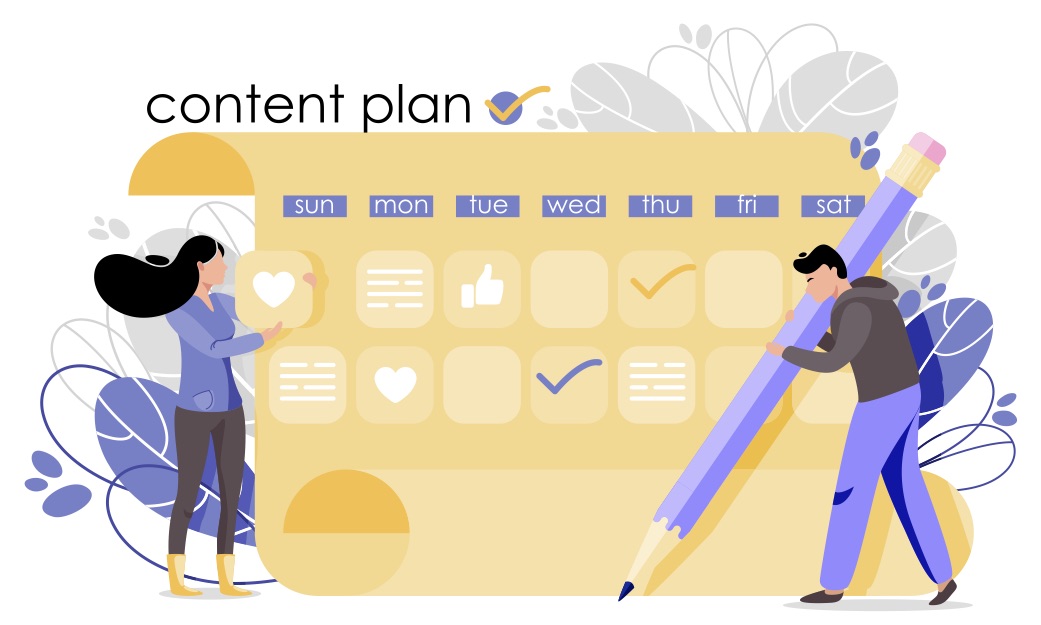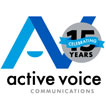
Ever wonder what the biggest difference is between a highly effective content marketing team and a less-than-effective one? Is it budget? Caliber of staff? Support from the C-suite?
Nope (although these things are important, too). It’s having a documented content plan.
Two-thirds of the most successful marcom teams have written content plans as compared with just 19% of the least successful teams, according to the Content Marketing Institute.
So what exactly is a content plan (or editorial calendar as we old-schoolers call it)? It’s a detailed list of the content you intend to publish in the coming year (or quarter, or month) to support your organization’s marketing strategy. Read more about content plans versus marketing plans. Then, get to planning your content for next year. (No, it’s not too early. See our content planning timeline for how we like to manage our time to ensure everything is ready to go on Jan. 1.)
Here’s how.
1. Establish your content goals.
Just as your marketing plan outlines your mission, goals, budget and audience, so should your content plan. It also should note which channels your audience prefers and content frequency.
A lot of this information may remain similar year to year, but it’s always a good idea to revisit it not only during the planning process but regularly. In fact, we recommend reviewing your content plan quarterly if not monthly to ensure it’s still optimal.
2. Review metrics/analytics.
Run reports and analyze what worked and what didn’t for you this year. Be sure to take a look at SEO, Google/search, AdWords, social, email click-through rate, etc. Which channels performed the best? What content gained the most traction? What content formats? What topics? And at what frequency?
3. Meet with key stakeholders.
Sit down with sales, client services and any other stakeholders within your organization to learn about what’s important to them for the coming year and how marketing may be able to support those initiatives. Depending on the size of your organization and the number of stakeholders, these meetings can be in the form of one-to-one conversations, group brainstorms or both.
Consider asking: What are your goals/objectives? What are your key messages? What CTAs are you expecting? What events are you attending/exhibiting at? What KPIs should we be aware of? How will success be measured?
4. Develop content topics.
Now that you know what to prioritize, the next step is to craft specific content topics that will engage your audience while also supporting your stakeholders’ goals. We like to include a working headline and a one- or two-sentence description of what the piece of content will cover as well as what format will be used (narrative, infographic, quiz, charticle, etc.). For example, the description we gave this article was:
Content Plan Guide. This blog post will explain what a content plan is and walk readers step-by-step through the process of building a successful content plan for their organization.
Our goal when writing these is that the topic should be 1) viable and 2) descriptive enough for a writer to run with.
Make sure you reference your documented strategy to ensure you’re developing the right number of ideas for the channels and frequency you’ve outlined.
5. Slot the ideas into the calendar.
 Now that you have a ton of brilliant, audience-centric ideas to choose from — yay, you! — it’s time to decide when to publish the content. We like to format our content plans as spreadsheets or literal calendars so we can visualize what topics we’ll cover when. Some organizations take a prioritization approach, in which they simply list the content they’d like to produce in the order in which they’d like to produce it.
Now that you have a ton of brilliant, audience-centric ideas to choose from — yay, you! — it’s time to decide when to publish the content. We like to format our content plans as spreadsheets or literal calendars so we can visualize what topics we’ll cover when. Some organizations take a prioritization approach, in which they simply list the content they’d like to produce in the order in which they’d like to produce it.
If you’re taking the calendar approach, start by plotting out upcoming product launches, conferences and events, and holidays and observances, and then think about how far in advance you’ll want to begin promoting these things. For example, you’ll want to begin publishing content related to a new service line to drive web traffic and search rankings well before it opens to the public. On the other hand, you probably don’t need more than one piece of content leading up to (or on) National Donut Day.
It’s worth noting that some content can’t be planned in advance. So, consider leaving a spot each month or once a quarter for breaking info. When we planned our 2023 calendar, ChatGPT wasn’t the phenomenon it is now. But we decided addressing the topic of generative AI was worth bumping our planned content. Adjusting a plan is always better than not having a plan.
6. Get buy-in.
Once your content plan is complete, it’s time to get those ever-important sign-offs. For a lucky few, that simply means getting your VP’s blessing. Others will need stamps of approval from a litany of stakeholders. You know your organization best, so be sure to build in the appropriate amount of time to take care of this step. Getting buy-in up front will save you a lot of hassle and headache down the road.
The time to get started is NOW.
Creating a content plan isn’t difficult, but it does take time and forethought. That’s why we recommend clients begin planning for the coming year in August (seriously, here’s the timeline we use).
We know it’s especially difficult to carve out time to plan for next year when you’re still drowning in this year’s content. So why not leave planning your content to us? See how AVC can help you plan your content.
